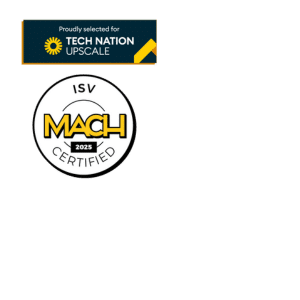What is a Service Level Agreement (SLA)?
A Service Level Agreement (SLA) is a formal contract between a service provider and a customer that defines the expected level of service, including quality, availability, and responsibilities. It establishes measurable standards and outlines consequences if the agreed-upon service levels are not met.
In-Depth Explanation of Service Level Agreements (SLA)
A Service Level Agreement (SLA) is a formal contract between a service provider and a customer that outlines the expected level of service, performance metrics, and responsibilities of both parties. It sets clear expectations for service quality, availability, and support, ensuring that both the provider and the customer are on the same page regarding service delivery.
Why It Matters
SLAs are crucial in eCommerce as they help maintain a high level of customer satisfaction and trust. They provide a clear framework for addressing issues and resolving disputes, which is essential in the fast-paced online retail environment. By establishing measurable standards, SLAs enable businesses to hold their service providers accountable and ensure that critical systems and services meet the needs of their customers.
How It Works
An SLA typically includes specific metrics such as uptime guarantees, response times, and issue resolution timeframes. It also outlines the consequences of failing to meet these standards, often in the form of penalties or service credits. Regular performance reports and review meetings are usually part of the agreement to ensure ongoing compliance and improvement.
Key Benefits
SLAs offer several advantages for eCommerce businesses. They provide a clear understanding of service expectations, reducing misunderstandings and potential conflicts. SLAs also encourage better communication between the service provider and the customer, leading to improved service quality over time. Additionally, they help businesses budget more effectively by providing predictable service costs and potential compensation for service failures.
Relevant Stats or Facts
Shyft’s research on performance metrics for shift management shows that companies that establish clear, tiered SLA structures experience 42% fewer escalations and 37% higher customer satisfaction scores.
Importance of Service Level Agreements (SLAs)
Service Level Agreements play a crucial role in business operations, particularly for companies involved in product data management and eCommerce. These agreements set clear expectations between service providers and their clients, ensuring that both parties understand the quality and scope of services to be delivered. In the fast-paced world of online retail and data management, having a well-defined SLA can mean the difference between success and failure, as it provides a framework for accountability and performance measurement.
For businesses in the eCommerce sector, SLAs are especially important when dealing with third-party logistics providers, payment processors, and cloud hosting services. These agreements help maintain consistent uptime for online stores, ensure timely order fulfillment, and guarantee prompt customer support. By establishing specific metrics and response times, companies can minimize the risk of service disruptions that could lead to lost sales or damaged customer relationships. Additionally, SLAs can help eCommerce businesses manage their reputation by setting standards for data security, privacy, and compliance with industry regulations.
In the realm of product data management, SLAs are essential for maintaining data accuracy, consistency, and availability across various platforms and channels. These agreements often cover aspects such as data synchronization frequency, error resolution timeframes, and system integration performance. By having clear SLAs in place, businesses can ensure that their product information is up to date and accessible to both internal teams and external partners. This level of reliability is critical for companies that rely on accurate product data to drive sales, manage inventory, and make informed business decisions in the competitive eCommerce landscape.
Examples of Service Level Agreements (SLAs)
Fashion/Apparel Retailer
In the context of a fashion retailer, an SLA might be established between the retailer and their e-commerce platform provider. The SLA could specify critical performance metrics such as website uptime, ensuring that the site remains operational 99.9% of the time to prevent loss of sales during peak shopping periods. Additionally, the SLA might outline response and resolution times for technical support requests, such as resolving website bugs or addressing issues with the digital catalog, critical for maintaining a seamless online shopping experience.
HVAC Manufacturer
For an HVAC manufacturer, an SLA with their third-party logistics provider is crucial to ensuring timely delivery of components and finished products. The agreement would detail delivery timelines, inventory management practices, and penalties for late shipments, which can impact production schedules and customer satisfaction. Furthermore, the SLA may address the technical support required for maintaining inventory management systems that ensure accurate and up-to-date information is accessible to the manufacturer’s supply chain and sales teams.
Distributor of Auto Parts
An SLA for a distributor of auto parts could involve agreements with their primary suppliers and shipping partners. The SLA would specify the expected time frames for order fulfillment and delivery as delays can critically impact repair operations for their clients, such as automotive service centers. It would also set quality standards for the parts delivered, ensuring that each component meets industry specifications to avoid costly returns or damage to their reputation in the market.
Brand Owner of Homewares Products Predominantly Selling on Marketplaces and Retailers
A homewares brand owner may enter into SLAs with major marketplaces like Walmart, Lowes, Home Depot, and Wayfair to secure favorable product listing terms. The SLA might include detailed standards for product information and imagery, fulfillment timelines, and return policies, aligning with the retailer’s expectations to ensure optimal online presence and customer satisfaction. In addition, the brand could have an SLA with digital marketing firms to maintain targeted ad campaign performance, including click-through rates and conversion optimization, vital for driving sales traffic on such high-visibility platforms.
Synonyms
Common synonyms for ‘SLA’ include:
- Operating Level Agreement
- Performance Contract
- Service Contract
- Service Level Commitment
Service Level Agreements (SLAs) and PIM
A Service Level Agreement, commonly known as SLA, is a formal contract between a service provider and its customers. This agreement outlines the expected level of service, including performance metrics, quality standards, and response times. In the context of Product Information Management (PIM) solutions, an SLA defines the specific commitments and responsibilities of the PIM provider to ensure the system’s reliability, availability, and overall performance. For example, an SLA might guarantee 99.9% uptime for the PIM platform, ensuring that product data is accessible and manageable almost all the time.
PIM solutions play a crucial role in maintaining and enhancing SLAs for businesses in the e-commerce and product data management sectors. These systems help companies streamline their product information workflows, ensuring that accurate and up-to-date data is consistently available across all sales channels. By centralizing product data and automating various processes, PIM solutions enable businesses to meet their SLA commitments more efficiently. For instance, a PIM system can help reduce the time it takes to update product information across multiple platforms, allowing companies to adhere to their promised turnaround times for data updates.
Furthermore, PIM solutions contribute to meeting SLAs by improving data quality and consistency. These systems often include built-in validation rules and data governance features that help maintain high standards of product information accuracy. This is particularly important for businesses that have strict SLAs regarding data quality and completeness. For example, a retailer might have an SLA that requires all product listings to include specific attributes, high-quality images, and accurate pricing information. A PIM solution can help ensure these requirements are met consistently, reducing errors and improving customer satisfaction. By leveraging PIM capabilities, businesses can not only meet their SLA obligations but also exceed customer expectations in terms of product data management and e-commerce operations.
Frequently Asked Questions
What are the key components of an SLA?
An effective SLA typically includes several important components. These include a clear description of the services to be provided, performance metrics to measure service quality, response times for addressing issues, reporting mechanisms, and penalties for failing to meet agreed-upon standards. It should also outline the responsibilities of both the service provider and the customer. Additionally, the SLA should specify the duration of the agreement, conditions for termination, and procedures for making changes to the agreement.
How often should an SLA be reviewed and updated?
SLAs should be reviewed and updated regularly to ensure they remain relevant and effective. In most cases, it’s recommended to review SLAs at least annually. However, for rapidly changing industries or businesses experiencing significant growth, more frequent reviews may be necessary. During these reviews, both parties should assess whether the current agreement meets their needs, if performance metrics are still appropriate, and if any new services or technologies need to be incorporated. Regular reviews help maintain a strong working relationship between the service provider and the customer.
What happens if an SLA is breached?
When an SLA is breached, the consequences depend on the terms outlined in the agreement. Typically, the service provider may face penalties or financial repercussions, such as service credits or refunds to the customer. In severe cases, repeated breaches may lead to contract termination. The SLA should clearly define what constitutes a breach and specify the resolution process. This may include escalation procedures, dispute resolution mechanisms, and remediation timelines. It’s important for both parties to communicate openly and work together to address any issues promptly to maintain a positive business relationship.







